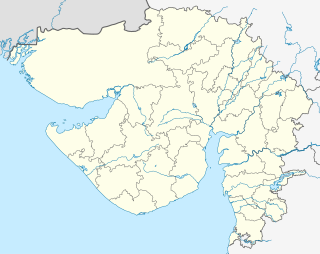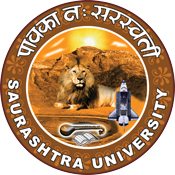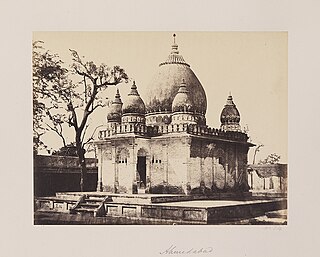
Ahmedabad is the largest city and former capital of the Indian state of Gujarat. It is the administrative headquarters of the Ahmedabad district and the seat of the Gujarat High Court. Ahmedabad's population of 5,633,927 makes it the fifth-most populous city in India, and the encompassing urban agglomeration population estimated at 6,357,693 is the seventh-most populous in India. Ahmedabad is located on the banks of the Sabarmati River, 23 km (14 mi) from the state capital Gandhinagar, which is its twin city.

Surat is a city in the Indian state of Gujarat. It used to be a large seaport and is now the commercial and economic center in South Gujarat, which is famous for its diamonds and textile Industries and as a shopping centre for apparels and accessories. It is the eighth largest city and ninth largest urban agglomeration in India. It is the administrative capital of the Surat district. The city is located 284 kilometres (176 mi) south of the state capital, Gandhinagar; 265 kilometres (165 mi) south of Ahmedabad; and 289 kilometres (180 mi) north of Mumbai. The city centre is located on the Tapti River, close to Arabian Sea.
This page provides a Historical timeline of Ahmedabad, the sixth largest city in India.

Saurashtra, and some part of it also known as Sorath or Kathiawar, is a peninsular region of Gujarat, India, located on the Arabian Sea coast. It covers about a third of Gujarat state, notably 11 districts of Gujarat, including Rajkot District. It was formerly a state of India before it merged with Bombay state. In 1961 it separated from Bombay and joined Gujarat.

Rajkot is the fourth-largest city in the state of Gujarat, India, after Ahmedabad, Surat and Vadodara and is in the centre of the Saurashtra region of Gujarat. Rajkot is the 35th-largest metropolitan area in India, with a population of more than 1.8 million as of 2018. Rajkot is the second-cleanest city of India, and is the 22nd-fastest-growing city in the world as of July 2019. The city contains the administrative headquarters of the Rajkot District, 245 km from the state capital Gandhinagar, and is located on the banks of the Aji and Nyari rivers. Rajkot was the capital of the Saurashtra State from 15 April 1948 to 31 October 1956, before its merger with Bombay State on 1 November 1956. Rajkot was reincorporated into Gujarat State on 1 May 1960.

Bhavnagar is a city in the Bhavnagar district of the Saurashtra region of Gujarat, a state of India. It was founded in 1724 by Bhavsinhji Gohil (1703–1764). It was the capital of Bhavnagar State, which was a princely state before it was merged into the Indian Union in 1948. It is now the administrative headquarters of the Bhavnagar district.

The Narendra Modi Stadium, previously known as the Motera Stadium, is a cricket stadium situated inside Sardar Patel Sports Enclave in Ahmedabad, Gujarat, India. As of 2020, it is the largest cricket stadium in the world and the second largest stadium overall, with a seating capacity of 110,000 spectators. It is owned by the Gujarat Cricket Association and is a venue for Test, ODI, and T20I cricket matches.

Naroda is a fast-growing area in Ahmedabad, northeast of central Ahmedabad in the Indian state of Gujarat.

Ahmedabad is the industrial center in western India. after Mumbai. The gross domestic product of Ahmedabad metro was estimated at $68 billion in 2017. It is the largest supplier of denim and one of the largest exporters of gems and jewellery in the country. Ahmedabad hosts the headquarters of major public-sector banks Ahmedabad Dist Co Op Bank, Ahd Mercantile Co-Op Bank Ltd, Ahmedabad Mercantil Co Op Bank, Dena Bank, The Cosmos Co - Op Bank, Manager Gujarat Ambuja Co-Operative, The Gujarat State Co-operative Bank Ltd.Gujarat State Coop Bank, The Kalupur Bank, Ahmedabad Capital Bank, Kutch Bank co op, Bank of Rajasthan, Bank of Marwad.

According to the 2011 national census, the population of Ahmedabad was declared to be 7,214,225. This figure was only limited to the municipality region. The total population of the Ahmedabad Urban Agglomeration came to 7.2 million people. There were 886 females to every 1000 males in 2001. Now there are 904 women to 1000 men in 2011. Ahmedabad had a literacy rate of 79.89% in 2001 which rose to 89.62 percent in 2011. Out of this, male and female literacy are 93.96 and 84.81 percent as of 2011 census. According to the census for the ninth plan, there are 30737 rural families living in Ahmedabad. Out of those, 5.41% live below the poverty line. There are 439,843 people who live in slums in the city. The majority of residents of Ahmedabad are native Gujaratis and speak Gujarati. There is also a sizable population of Punjabis, Marathis, Tamils, Sindhis, Malayalis and Marwaris who bring in their native language and culture to the city. The government institutions and military base near the city also bring peoples from across India. The city's population has increased in a major way following increasing economic expansion and modernization.

Mahuva is a town and subdistrict of Bhavnagar District, in the state of Gujarat, India. Located on the coast of the Arabian Sea, Mahuva is known for its mild weather and green, lush surroundings, including many coconut tree plantations. The town is a part of the Saurashtra region, and is known as the Kashmir of Saurashtra. Mahuva is also known for wooden toys, raw onions, groundnuts, and a local variety of mango called the Jamadar. The region is home to a thriving agribusiness industry, particularly enterprises that dehydrate vegetables such as garlic and onions for use in processed foods.

Juhapura is a neighbourhood in New West Zone of Ahmedabad, Gujarat, India near Sarkhej, along the National Highway 8A that goes towards Saurashtra and Kutch. The area was developed in 1973 for the people who lost houses in flood, it was founded then prime minister of India Mrs. Indira Gandhi. The first housing society of the area was Sarni Kamdar.

Sarkhej is a suburban neighbourhood in the city of Ahmedabad. It is primarily known for the Sarkhej Roza is an architectural complex located 8 km south from the city centre. One of the most important roads of metropolitan Ahmedabad, Sarkhej–Gandhinagar Highway, originates from Sarkhej and ends at the twin city Gandhinagar.
Healthcare in Ahmedabad is provided through several hospitals and medical colleges - both government and private. In addition to providing healthcare to the Gujarat population, Ahmedabad also focuses on medical tourism and in 2009 received about 1,500 visitors from outside the state, including some from abroad.

Saurashtra University is one of the significant universities in Gujarat state in India. This university was established on 23 May 1967, in Rajkot city, and the administrative headquarters are at Rajkot Saurashtra University was created on a rigorous demand, for a separate university out of Gujarat University (Ahmedabad), from the eminent educationists and freedom fighters of the Saurashtra region. The demand was more prominent after the creation of Gujarat state on May 1, 1961. The Saurashtra University Act was passed by the Legislative Assembly of Gujarat in the year 1965(Gujarat Act No. 39 of 1965). Saurashtra University, established on 23 May 1967, having two headquarters in the initial stage i.e. Rajkot and Bhavnagar. After the incorporation of the Bhavnagar University, Rajkot became the sole headquarters of the Saurashtra University. The campus of the university is spread over 363 acres (147 ha) of land. The present jurisdiction of the University includes Amreli, Jamnagar, Rajkot, Surendranagar, and Morbi districts. It has 29 Post Graduate Departments on its campus and 238 affiliated colleges.

Sardar Vallabhbhai Patel Stadium is an Indian sports stadium located in the Navrangpura locality of Ahmedabad, Gujarat. It is sometimes referred as Sports Club of Gujarat Stadium. The stadium holds the honor of hosting the first One Day International match played in India. Once a new stadium of the same name came up in Motera in 1982, the Sardar (Vallabhbhai) Patel stadium hasn't been used for international cricket matches. The stadium is one of the home grounds of the Gujarat cricket team that plays in domestic tournament of Ranji Trophy. It is equipped with floodlights for day-and-night games and is a regular venue during Indian domestic cricket season.

Ghumli is a village located 45 km from Porbandar, at foothills of Barda, in Devbhumi Dwarka district of Gujarat, India.

Vallabhbhai G Kakadiya is a Member of Legislative assembly from Thakkarbapa Nagar constituency in Gujarat for its 12th, 13th and 14th legislative assembly. He is State level minister of Transport.

The 1969 Gujarat riots refer to the communal violence between Hindus and Muslims during September–October 1969, in Gujarat, India. The violence was Gujarat's first major riot that involved massacre, arson and looting on a large scale. It was the most deadly Hindu-Muslim violence since the partition of India in 1947, and remained so until the 1989 Bhagalpur violence.

Sardar Khan's Roza or Nawab Sardar Khan's Mosque and Tomb, is a mosque and tomb complex in Jamalpur area of Ahmedabad, India.

















